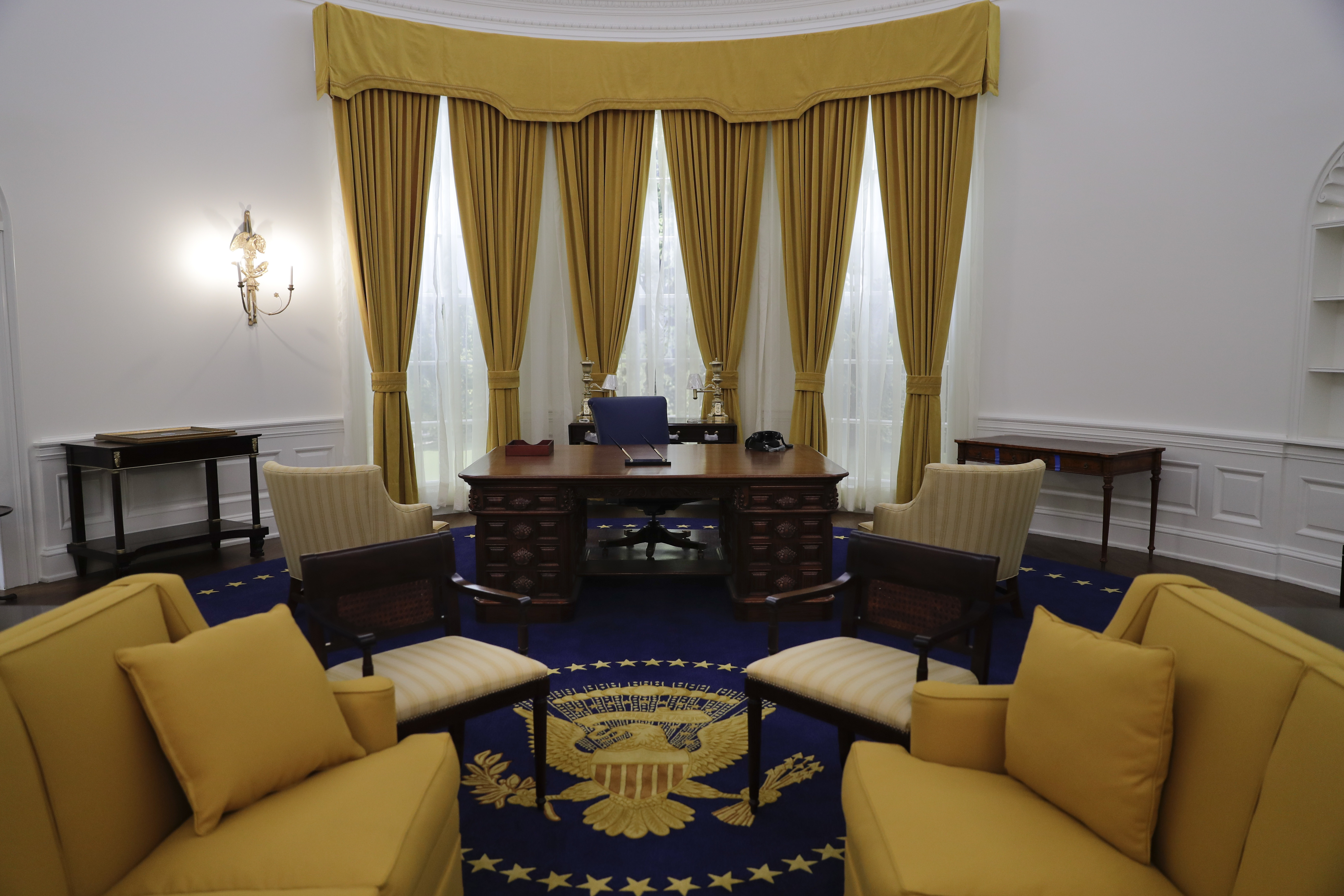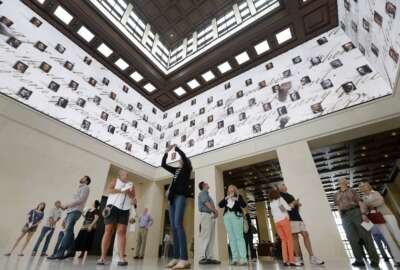A tiny agency aims to help libraries and museums everywhere
A small federal agency has launched an initiative to strengthen a highly specialized class of museums in the United States. The Institute of Museum and Library...
A small federal agency has launched an initiative to strengthen a highly specialized class of museums in the United States. The Institute of Museum and Library Services is taking in internship applications from American Latino museums to, in its words, strengthen their institutional capacity. For details on the program, the Federal Drive with Tom Temin spoke with Laura Huerta Migus, the Institute’s Deputy Director for Museum Services.
Interview Transcript:
Tom Temin I have to begin with the Institute of Museum and Library Services in 16.5 years of hosting the show, I don’t think this agency has ever been on. And I like to kid people, I know everything there is to know about the federal government, but I don’t know about this institute. So let’s begin with what the institute is all about, because I suspect there are other feds that don’t know.
Laura Huerta Migus You’re not the first one to be hearing about us for the first time, but we’re hoping that’s going to be, rarer occurrence as we move forward. IMLS, the Institute of Museum and Library Services is an independent executive branch agency. We consider ourselves one of the three sister cultural agencies, along with the National Endowment for the Arts and the National Endowment for the Humanities. We are the federal government’s largest funder of libraries and museums and function primarily as a grantmaking agency.
Tom Temin And you also have an external board drawn from people that are operating in museums and libraries, which is a little bit unusual.
Laura Huerta Migus That’s correct. We do have a presidentially appointed board, the National Museum and Library Services Board, that is made up of 20 to 22, depending on the time of year, representatives and leaders from the library and museum sectors.
Tom Temin And the grant making that you do. What’s the rough total that goes out every year?
Laura Huerta Migus So right now, our appropriations are right around $257 million a year to the nation’s libraries and museums. About two-thirds of our funding goes out through our grants to states, programs that funds libraries, public libraries, primarily at the state level. And then the balance of our funding is disseminated through competitive grant programs. And about 53 million of those dollars are dedicated to museum competitive grant programs.
Tom Temin And looking at museums in the United States. Is it fair to say that they are becoming more specialized, or that more specialized, focused museums are springing up? That’s what I see from what I read, but you tell me what the trends are.
Laura Huerta Migus Sure, I might say that museums are becoming much more community focused. And really, the services in IMLS, Museum and Library services is really referring to the fact that our agency funds that public service function of both museums and libraries. And so what we are seeing is that there are more museums that are really coming up from the grassroots, that are community established, community curated, and are often telling the stories of specific communities. And when I say communities, that’s a really broad term. Sometimes it’s a neighborhood and sometimes it is, again, based on specific cultural heritage as well.
Tom Temin Interesting. So is one of the challenges of these museums, then to get people not from the neighborhood to stop in and take a look.
Laura Huerta Migus I would say yes to that. And most people don’t know that the United States is actually very unique in the world that we have community based museums. In most other countries museums are government entities. They’re funded by states, by the federal government, and their content is really curated that way as well. And the United States museum community is quite different and quite localized. And so it makes for a really rich marketplace. But it means that the ways of supporting those museums is also really distributed and diverse, and that presents both opportunities and challenges for these institutions.
Tom Temin And there are privately owned museums that are open to the public. Are those sometimes eligible for federal grants?
Laura Huerta Migus Actually not in our program. So IMLS only funds nonprofit museums that are open to the public at least 120 days a year, and nonprofit can include 501 C3 independent institutions, as well as museums that are on college campuses or even parts of other types of agencies and organizations like hospitals, etc.. Must be nonprofit.
Tom Temin It could be in private hands, but nonprofit?
Laura Huerta Migus Correct.
Tom Temin We are speaking with Laura Huerta Migus, deputy director for museum services at the Institute of Museum and Library Services. And let’s get to the program now where you are looking at internships and fellowships for those from Latino museums. Tell us more about what’s going on.
Laura Huerta Migus So this new program, whose acronym is ALMIFI, the American Latino Museum Internship and Fellowship Initiative, is our first standalone funding program out of a brand new appropriation we received as part of the establishment of the National Museum of the American Latino in 2020, and as part of the establishment of that museum, in the legislation, there is a section that creates a new grant program to support American Latino museums. And this actually follows a pattern started with the establishment of the National Museum of African American History and Culture, which also created a similar grant program to support African American focused museums here at IMLS.
Tom Temin All right. And this sounds like fellowships, internships doesn’t sound like grants. So what is the actual program designed to do here?
Laura Huerta Migus Thank you so much for that question, yes. We are not funding individual fellowships and internships. What we are funding in this grant program are actually partnerships between universities and museums to create fellowships and internships that are focused on Latino studies, American studies, to really help build that pipeline and workforce that has expertise in sharing, preserving, and educating around the contributions of Latinos to the American story.
Tom Temin Because the release mentions the increase in capacity of these museums. So it sounds like an increase in the human capital capacity of museums.
Laura Huerta Migus That’s correct. The grassroots nature of many of these institutions means that they are not often able to access or have visibility as and a future employer to students and scholars that are creating these careers and expertise in Latino culture. And so we really see this program as a way to accelerate the connections and the career pipeline between these institutions and then the students that universities are supporting in these studies.
Tom Temin So the grants would go to these smaller institutions, who would then create fellowships and internships for people studying Latino culture.
Laura Huerta Migus That’s correct. And all of the internships and fellowships that are established as part of these programs are paid internships and fellowships. This is part of the requirements of the grant program, so that it really is setting up a trajectory for real employment, and it gives the institutions time to really understand and flex so that they’re ready to support those future professionals.
Tom Temin And do you monitor how the museums, such as the Latino museums or any kind of specialized community museums to ensure that they have some reasonable way of displaying things in a way that is historically accurate, that honors what happened in reality, but on the other hand, is viewable and digestible by everybody.
Laura Huerta Migus So I would say that there’s yes and no. Our grantees are all required to provide regular reporting to us throughout the life of their grant. But as a grant maker, IMLS is not an editor of the content. However, in this program, we also do strongly encourage that they include an external evaluator throughout the program that is helping to serve as that third party reflector on the success and the challenge of implementation of the program.
Tom Temin Right. Because you can present history, for example, in terms of verbs, of what people did, but you can leave the adverbs out and let people judge for themselves.
Laura Huerta Migus Yeah. And that’s really part of the learning process as we learn about how to bring scholarship from the university and from a really sometimes theoretical environment to translating that for public education and knowledge. And we really see that as a really important place for building capacity and again, giving the opportunity for emerging professionals to learn that side by side with the leaders of these community based institutions that have really been the stewards of these very important life experiences and histories.
Tom Temin And can these grants cover museums that want to increase capacity for being good museums, in the sense that they can house and preserve artifacts. Because if you say you have an old piece of art or an ancient document or a 300 year old document, those take specific technical treatment to make sure that they stay preserved. And maybe small museums need help on that front, also.
Laura Huerta Migus This particular program does not cover what we would call collection stewardship. All of those needs that you mentioned fall under that umbrella. However, we do offer eight other museum programs, about half of which have opportunities for museums to get that specific support around improving the management and preservation of their collections. And so there is an overlap in eligibility. And we often have museums that are successful in more than one of our programs to support these different specific needs.
Tom Temin What else do people who might want to apply for these grants need to know?
Laura Huerta Migus Our deadline is March 1, and the grant amounts are from $100,000 to $750,000.
Tom Temin And you have a public event to talk more about it.
Laura Huerta Migus We do. We are holding a webinar on Jan. 17, and you can register to attend that webinar on our website imls.gov.
Copyright © 2025 Federal News Network. All rights reserved. This website is not intended for users located within the European Economic Area.
Tom Temin is host of the Federal Drive and has been providing insight on federal technology and management issues for more than 30 years.
Follow @tteminWFED





